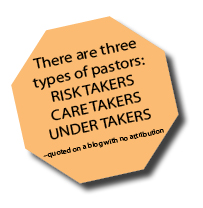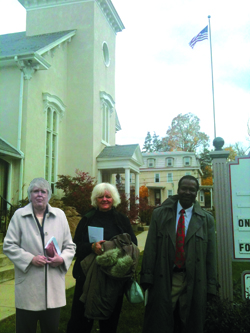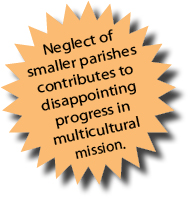![]() We’ve written about this subject before, but it is important enough to tackle from a different angle. Pastors must start to learn and use Social Media if they are to minister effectively in today’s world.
We’ve written about this subject before, but it is important enough to tackle from a different angle. Pastors must start to learn and use Social Media if they are to minister effectively in today’s world.
If your congregation is lucky, you have a pastor who understands the power of social media ministry. It seems like a no-brainer for anyone with the objective of reaching more people with the Good News.
The reality is that many pastors were called and trained for the ministry long before social media was available. Even fewer have been ordained in the last five years or so when social media began to spread its roots all over the world.
Congregations must realize as they develop Social Media Ministry that it requires work — daily work. It is a discipline just like answering snail mail used to be. Your Social Media Ministry Committee (Evangelism Committee) will want very much to work with your pastor, but may encounter resistance. It’s not what pastors do!
Here are some tips.
- You must convince your pastor that your Web Site, Blog and Facebook or Google+ presence is not for vanity. Communicating with and cheerleading your current membership is only the tip of the iceberg for your Social Media Ministry potential. Examples of going beyond this are few but growing. 2×2 is an example. We are a very small church reaching more than 100 new readers each week within only a few months of launching our site. We are finding our way, but we are a step or two in front of most and will readily share what we learn.
- On the other hand, appealing to vanity might work! Pastors might enjoy knowing they can put a video or slide show on the web and be found in the search engines by thousands.
- Convince your pastor that the Social Media is a powerful evangelism tool. It is not just a place to post sermons. It is about communicating with the neighborhood in ways that show the church cares about them. Ironically, the web allows you to reach the whole world while you talk to the guy next door!
- Take the teamwork approach. While professional leadership input is helpful, it is not a one-person enterprise. Clergy and laity must work together.
- Statistics can be helpful. Point out that your pastor can continue to prepare sermons that are delivered on Sunday morning to the same 50 people — or their insights can be condensed and delivered to 100s or 1000s every hour of every day.
- Don’t overwhelm. This is where pre-planning and the editorial calendar become invaluable. If your leader can see what is expected during the week, it will help him or her to begin adjusting schedules and routines. Point out that people in all fields are rearranging their work habits to make room for the potential of Social Media. If CEOs of Fortune500 companies can do it, so can clergy!
- Don’t let it go. If your church is like most churches, time is an imperative. This is a tool which can help churches move from where they are to where they need to be. You don’t want to wait years in hopes of someday finding a pastor well-versed in Social Media to take your church in a new direction. You need current leaders to embrace technology now.
- Find the help you need to educate and train your whole team, including your pastor. This is more of a time commitment than a cost commitment. There are many resources on line which are free. socialmediaexaminer.com, hubspot.com, hubze.com, copyblogger.com, interactmedia.com are good starting places. Workingpreacher.org is a seminary blog that uses Social Media techniques.
- Make education a regular feature of your Social Media Committee Meetings. Assign someone each month to research a topic of interest and present ideas and a list of resources found. Business support groups do this routinely. They hold weekly meetings and one member is given 10 minutes to speak on a business topic.
If you’ve found helpful sources online, please share them! We’re in this world together!
[contact-form-7 404 "Not Found"]







